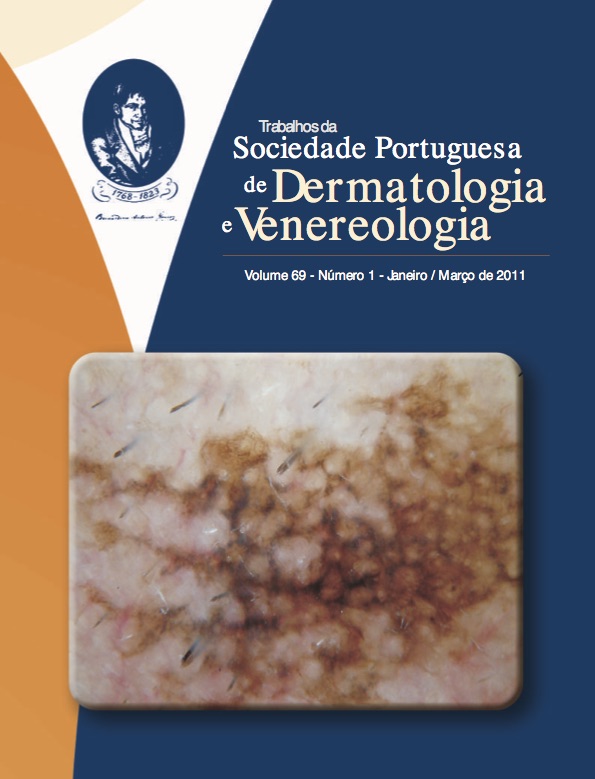DERMATOPHYTOSES IN BRAGA – A RETROSPECTIVE STUDY OF THE LAST 11 YEARS (1999 – 2009)
Abstract
Objectives: To determine the prevalence of aetiological agents of dermatophytoses and epidemiologic characteristics of patients observed at the Dermatology Department of Hospital de Braga; to analyze the most frequent species, according to age and site of infection, and to compare our results with previous published studies.
Material and Methods: Direct microscopy and culture of 5825 samples from patients with suspected superficial mycoses, observed between January 1999 and December 2009, at the Dermatology Department of Hospital de Braga.
Results: Over this period, out of 5825 samples, dermatophytes were isolated in 1143 (19,6%). The most common type of infection was tinea corporis (44,8%). The most frequent dermatophyte was Trichophyton rubrum (43%), being the main cause of tinea cruris (73,5%), tinea ungueum (74,8%), tinea pedis (72,7%) and tinea manuun (57,7%), followed by T. mentagrophytes var. granulare, the dominant specie in tinea corporis (38%) and tinea barbae (76,9%). Mycrosporum canis was the most frequent agent in tinea capitis (67,1%).
Discussion: Dermatophytoses are common in clinical practice. The distribution of dermatophytes varies in different geographical areas and over time, depending on several factors. Our results are similar to those found in other Portuguese published studies.
Downloads
All articles in this journal are Open Access under the Creative Commons Attribution-NonCommercial 4.0 International License (CC BY-NC 4.0).








